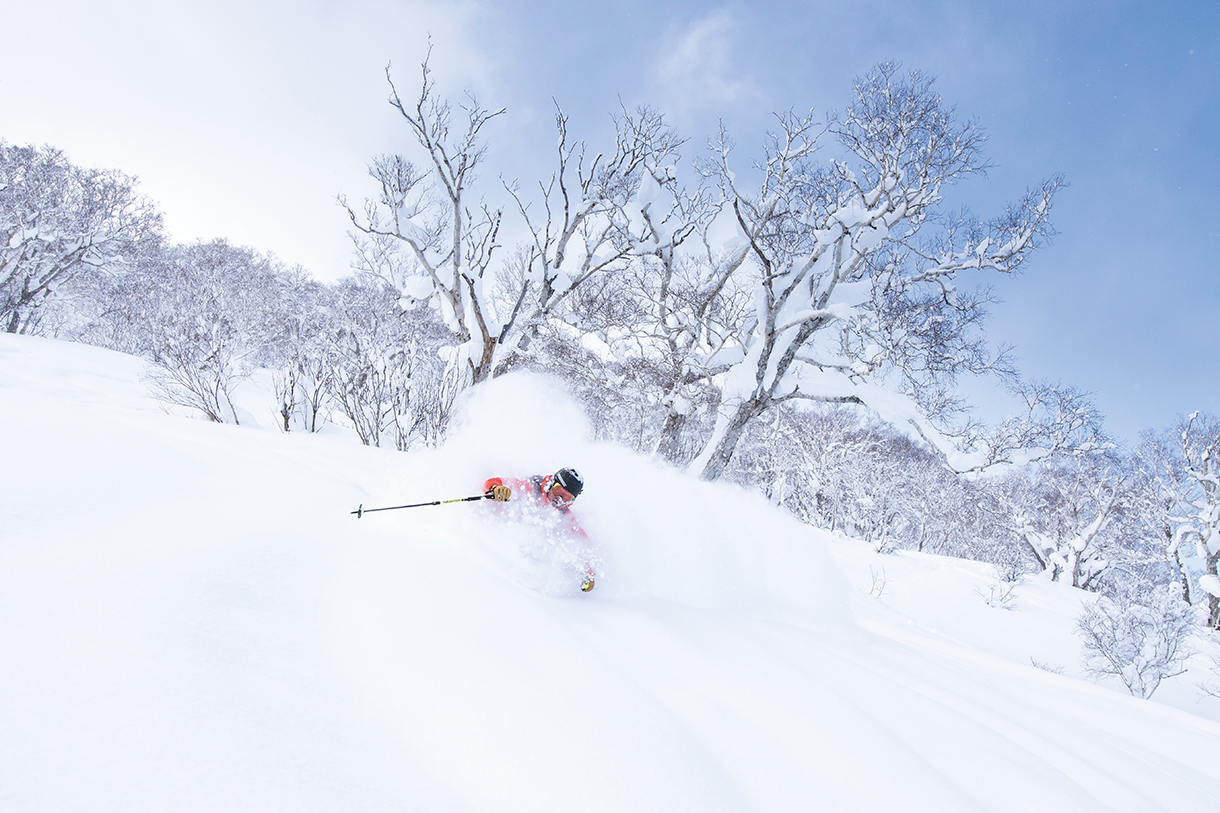
Powdered Perfection
For thigh-deep skiing, Japan is it, bar none. And unlike other destinations that get a lot of perfect powder, it lasts.
“You can’t understand how spoiled we are here,” says Jen Veilleux, an expat American who has run Japan Powder Connection, a Hokkaido guide service, since 2013. “We go out in the morning and ski thigh-, waist-, or chest-deep powder. It starts snowing around lunchtime, snows all afternoon and night, and then the next day we do it again. That’s our normal.” Veteran ski travel expert Sarah Plaskitt owns Scout, a boutique custom tour planning agency focused on the luxury market. She helps enthusiasts plan exceptional ski vacations all over the world but sums up the appeals of Japan succinctly: “It’s got the world’s best snow and the world’s best food and it’s a ton of fun. Why wouldn’t you go there?”
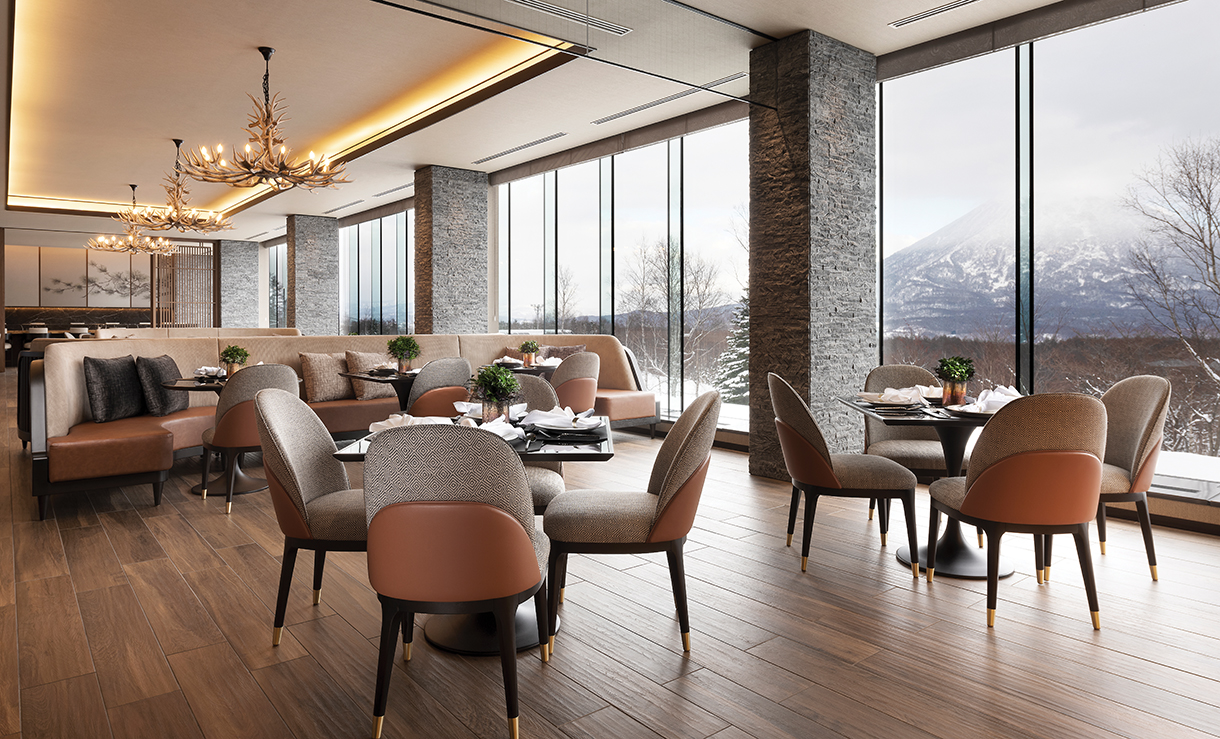
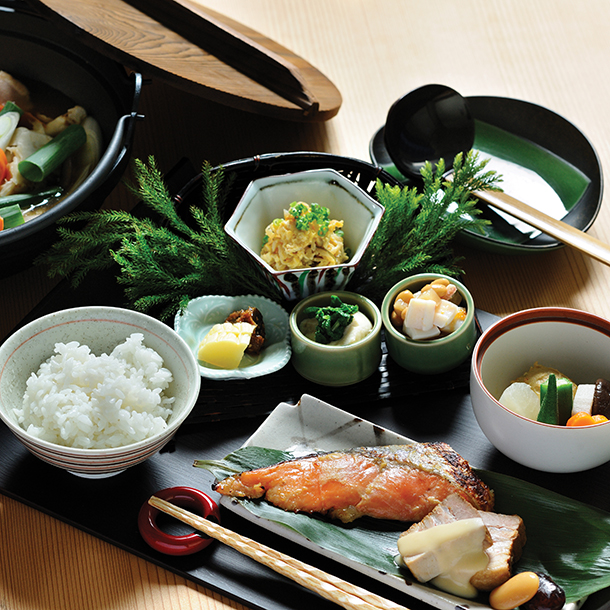
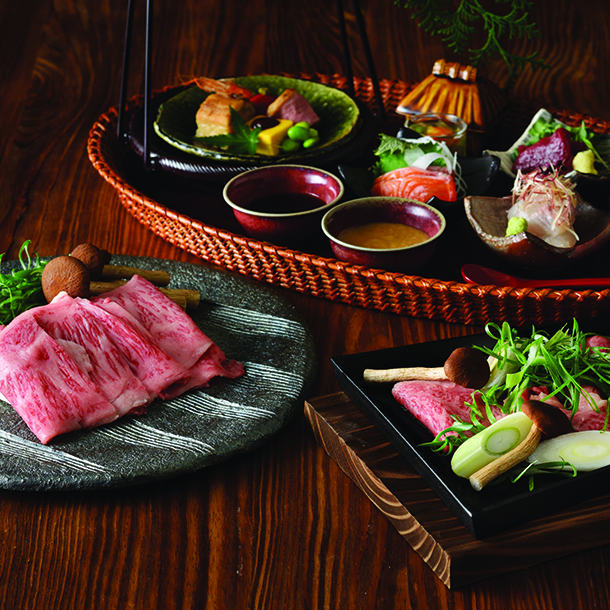
Powder is what put Japanese skiing and snowboarding on the map around the world, but in pre-pandemic years the country enjoyed record tourism year-round, and a lot of that had to do with where visitors stayed and what they wanted to eat. “The mountains have the same low-key base lodge cafeterias as the United States, but everything is made-to-order, really good, and surprisingly cheap,” says Pat Gallagher, a financial industry executive and avid ski traveler. “For the same price as a mediocre burger and stale fries you get ultra-fresh sushi, tempura, tonkatsu, ramen, and karaage, which is crazy-good Japanese fried chicken. It got to the point where we had to have karaage every day. Plus, there’s sake, beer, and fantastic whisky.” If you love skiing or snowboarding and travel, the question is not whether you should go; it’s where. Japan has hosted the Winter Olympics twice, in two key regions, Hokkaido and Nagano (there are others, as Japan has more than 500 ski resorts). Both share unbelievably prodigious powder but offer very different experiences. An ideal first trip combines a week in each, but those with less leisure time have to make the difficult choice between the two. Either way, most skiers bookend the trip with a couple of nights in Tokyo and possibly Kyoto for a full Japanese immersion.
Hokkaido gets slightly more snow (the most anywhere) and has the largest resorts, including more that offer out-of-bounds backcountry skiing. Among the region’s hundreds of resorts, Niseko is well-known by foreign skiers. It’s Westernized to the point where it is easier to find a burger or taco than tonkatsu or negimaki. Most service industry employees are Australians or New Zealanders; English is widely spoken; and there are many major international hotel brands. It feels quite a bit like Vancouver’s Whistler. This winter, it welcomes the highly anticipated Higashiyama Niseko Village, a Ritz-Carlton Reserve—already touted as the top ski resort hotel in Japan, and arguably, the world. The opening is expected to be the tipping point that puts Japanese skiing on the global luxury radar, and this will only increase when Aman opens its boutique resort here in 2023.
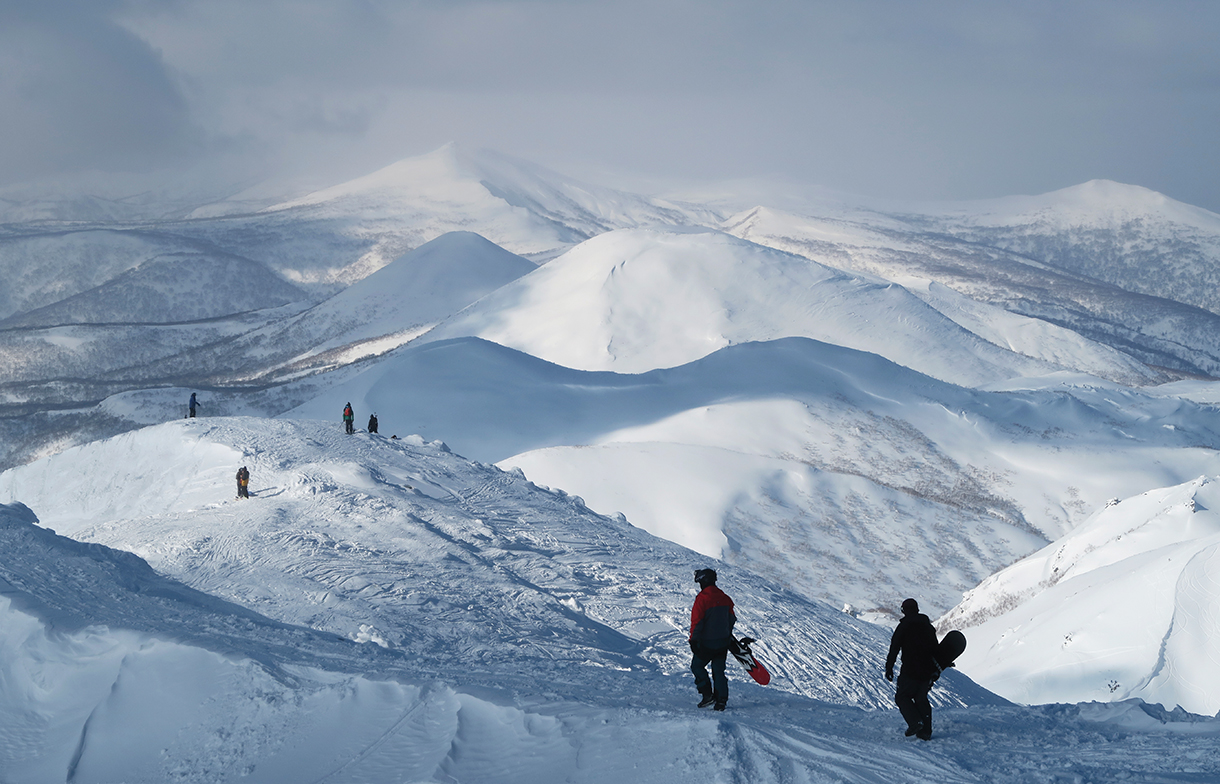
Another large ski resort is neighboring Rusutsu, which has just a small village but spreads out among satellite developments with many luxury hotels, restaurants, bars, stores, and amenities. It is one of Japan’s most popular resorts, with 18 lifts, and very popular with Chinese, Taiwanese, and Singaporean travelers (do not visit over the jammed Chinese New Year’s holiday period).
Nearby Kiroro, a must-do day trip for experts and backcountry skiers, lacks a town, but has excellent lodging and frequently features in American ski and action sports films. As a result, virtually everyone in the parking lot these days is American, Canadian, or Australasian, carrying the transceivers and avalanche gear and gunning for the backcountry gate. Another great day trip is to Mount Weisshorn, a defunct ski resort now used exclusively by Niseko Weiss Powder Cats, for private cat skiing with a maximum of 12 guests.
In sharp contrast to the Hokkaido region, Nagano is very traditional, with few English menus and little English spoken. This makes the experience both more authentic and more difficult to navigate, especially since Nagano has more smaller mountains and requires moving around (to ski, not stay). Among several small ski towns, the best known is Nozawa Onsen, with a medium-size namesake ski mountain and large cross-country center used in the Olympics. Many visitors stay here even if they also ski other resorts like Shiga Kogen, Madarao, and places in the Hakuba Valley. In Nozawa Onsen, a charming ski town and the nation’s birthplace of skiing, there are no chain hotels, and almost every restaurant is Japanese. There are, however, lots of onsens—mineral-rich hot springs run as luxurious soaking pools that also serve fantastic food.
While Nagano gets marginally less snow, powder can be easier to find. In Japan, locals avoid it, preferring groomers over even in-bound glades. Thus, thigh-deep powder is left untracked in full view of busy chairlifts lingering into mid-afternoon (unheard of in the Rockies). Nearby, the immense Shiga Kogen is the highest-altitude ski resort on Japan’s main island, and in European-style, is 18 interconnected small resorts with a shared lift ticket. Skiing here is a must, but as it is set in a National Forest, there is slopeside lodging but no town.
The Madarao resort is so famous for glade skiing that its nickname is “MadaPow!” For years, tree skiing was off limits in Japan (at some resorts it still is), but Madarao was the first to create designated glades, and leaves most terrain ungroomed. It remains the Holy Grail for tree skiing fans, but with no village, it is a day trip from Nozawa Onsen or Shiga Kogen. Hakuba Valley is home to 10 smaller resorts that have a shared ticket but are not physically interconnected.
So in short, Nagano is more complex and more Japanese, welcoming a sense of exploration and cultural immersion, while the biggest resorts of Hokkaido are self-contained, modern international ski destinations with a more turnkey experience. And if you do have to choose, either way, there will be lots and lots and lots of powder.
The Details
GETTING THERE
Most skiers use Tokyo as their gateway. Nagano is less than two hours by direct Shinkansen bullet train from Tokyo station, but if you’re going straight to the slopes to or from Narita airport—especially with skis—it is less cumbersome to use a ski shuttle van and go door-to-door with all your gear in about six hours, as it takes two-plus hours just to get to Tokyo Station. Nagano is also close to Kyoto, which is worth an added vacation extension.
Likewise, from Tokyo itself, the easiest way to get to Sapporo (Hokkaido) is by train (four hours), but arriving or departing from abroad, it’s a short and frequent flight connection from either Tokyo airport. You can also fly directly into Sapporo via Asian hubs such as Hong Kong, Seoul, or Taipei. It is a two-hour drive from Sapporo to the Niseko region, with lots of private car or SUV transfers available.
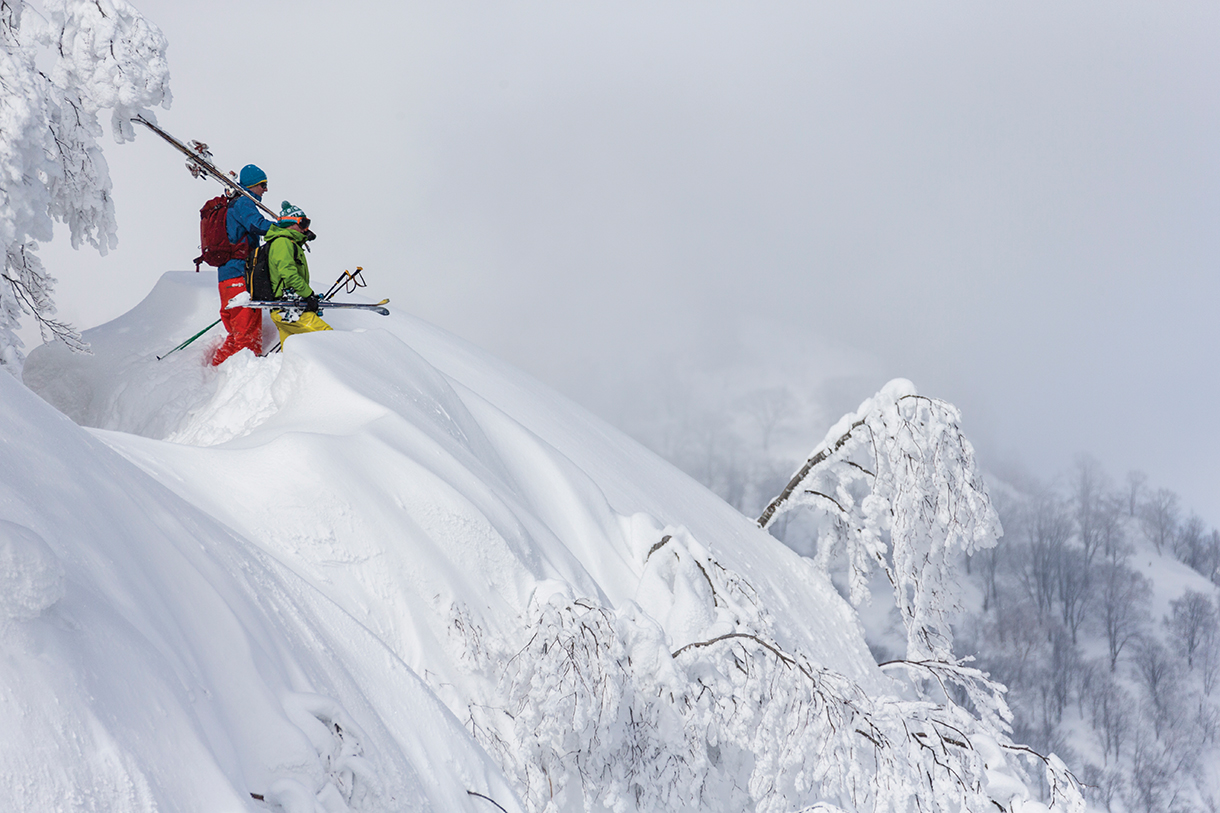
EXPERTS FOR HIRE
To navigate language differences, flight and airport options, ground transfers, ski passes, ryokan and restaurant bookings, and local transportation, use a ski travel specialist who is familiar with Japan such as Scout Ski (scoutski.com), a boutique custom ski trip planning consultancy; Alpine Adventures (alpineadventures.net), a full-service luxury ski travel agency; or Aspen-based Ski.com (ski.com), which has five decades of ski travel experience and offers à la carte trip planning. Ski.com also operates several annual Japan guided group trips.
Incredibly valuable are local regional specialists who offer private ski guiding, as well as providing travel services like ground transport, lodging, restaurant reservations, sightseeing, lift tickets, and advice. In Hokkaido, Japan Powder Connection (+81.80.6746.7796) has a bilingual crew of locals, while in Nagano there is Go Ski Nagano (goskinagano.com), owned by a passionate local skier who lived in Colorado for years and understands the American market.
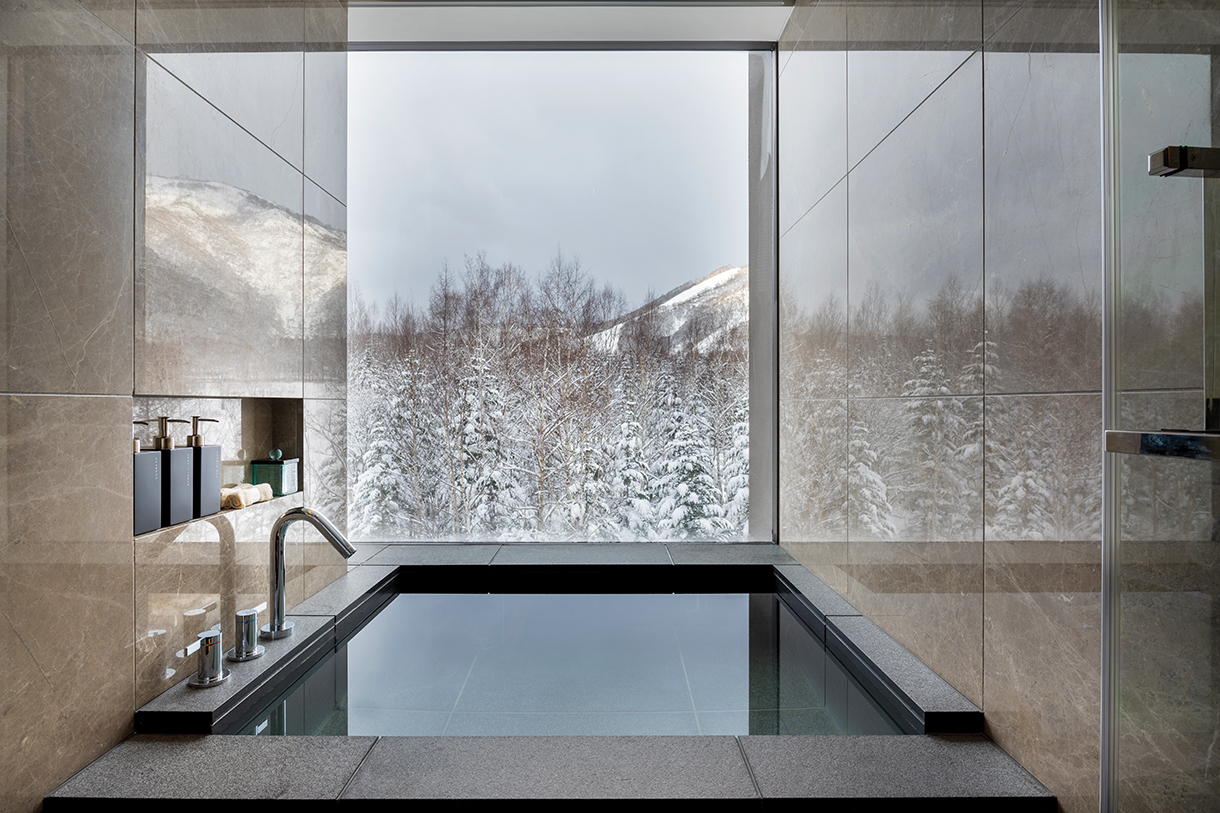
In most resort towns there are two main lodging options: Western-style resort hotels and ryokans (traditional Japanese inns). Ryokans typically require guests to take off footwear upon entering, include elaborate breakfasts, have onsens, and encourage wearing yukatas (Japanese robes), even to restaurant dinners. As much a cultural experience as a place to sleep, a ryokan stay is a must for the more adventurous visitor.

Hokkaido
On Japan’s northernmost island, home to its two largest ski resorts, neighboring Niseko and Rusutsu. Higashiyama Niseko Village, a Ritz-Carlton Reserve (ritzcarlton.com) opens in December as the first Reserve-brand mountain destination and fifth property worldwide from Marriott’s highest-tier luxury brand. Among the 50 rooms and suites are a spa, onsen, a lounge, and two restaurants, including an omakase sushi specialist, something surprisingly lacking in Niseko. Ski rentals, a ski school with multilingual instructors, and, in summer, two private golf courses are also available.
The same owners operate the adjacent ski-in/out Hilton Niseko Village (hilton.com) and Green Leaf Niseko (thegreenleafhotel.com), both in an on-mountain village. The Hilton is the area’s largest full-service hotel, with indoor and outdoor onsens, a fitness center, a spa, a bar, and six restaurants. The more residential Green Leaf has plush lodging and its own spa, onsen, bar, and restaurant. Another new luxury hotel, the Park Hyatt Niseko (parkhyatt.com), opened last winter, and top local operators include the Ki Niseko (kiniseko.com) and AYA Niseko (ayaniseko.com), both ski-in/out with luxury residences instead of hotel rooms, Western and Eastern cuisine, bars, and numerous amenities.
The region is also home to one of the most acclaimed luxury ryokans in Japan, Zaborin (zaborin.com), named to countless “world’s best” lists for boutique hotels, culinary, and ski lodging. The compound-style contemporary ryokan has 15 freestanding villas, each with two private onsen baths—indoor and out—a cigar lounge, fine art on the walls, and Japanese antiques throughout. For a more Eastern experience at Japan’s most Westernized mountain, there is no competition. The fabulous property is outside Niseko Village but chauffeurs skiers to the mountain and wherever they want to go. In Kiroro, the self-contained luxury resort The Kiroro, A Tribute Portfolio Hotel (kirorohokkaido.com) has stores, six varied restaurants, a spa, a fitness center, and Hokkaido’s most extensive onsen complex with indoor, outdoor, and specialty baths. In Rusutsu, the best hotel is the 5-year-old Westin Rusutsu Resort (marriott.com), with 210 oversize modern guest rooms, onsen, and two restaurants, plus additional eateries and shops surrounding it in the small base village.
Nagano
Among the best Nagano lodging options is Ryokan Sakaya (ryokan-sakaya.com), an intimate retreat with multiple restaurants, exceptional food, and onsen baths. Shiga Kogen has several large ski-in/out hotels across its slopes, the best of which is the Prince Kogen Yakebitaiyama (princehotels.com). Prince is one of Japan’s largest upscale hotel brands, and this full-service property sits at the base of a lift, with a spa, outdoor onsen, and eight bars and restaurants. In Hakuba Valley, an excellent option is the Kai Alps (hoshinoresorts.com). Kai is the contemporary brand of Japan’s most luxurious hotel company, Hoshino Resorts.




